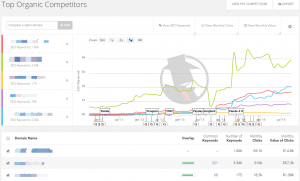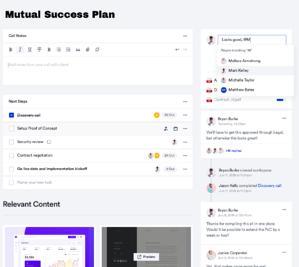
Ever hosted Thanksgiving? Then you’ve experienced one day in the life of an MSP program manager
Thanksgiving is practically here. Its presence is palpable. You feel the chill the air and smell the smoke rising from the chimneys of cozy hearths. Across the United States, families are readying themselves to travel over the river and through woods to grandmother’s house. The clerks at the market are frantically trying to keep the shelves stocked. Elaborate plans are drawn up to coordinate the efforts of recipe gathering, shopping, cooking, accommodating guests, laying out tables, setting up for the big game, and so forth. And, more often than not, all those tasks generally fall on one person to manage.
There are multiple “stakeholders” involved, each with their own requirements, desires and goals. There are “vendors” to handle: travel agents, hotels and grocers. Then there are the “temporary workers,” the family members and friends enlisted to help execute the cooking, logistics and other festive preparations. And as we know too well, holiday events like this can devolve into stress and tension. Sounds a lot like running an MSP program, doesn’t it?
Maybe it’s Mom, maybe it’s Dad, maybe it’s another relative who’s tasked with hosting the Thanksgiving celebration. Whoever that person is, he or she is making a great deal of sacrifices to ensure that the program runs smoothly and successfully for everyone else. And that’s the everyday reality for MSP program managers. So in honor of the brave and giving conductors who keep the contingent talent train on its tracks, let’s give special thanks this November 26. Because those same stalwart champions of organization and delivery will probably be running the Thanksgiving show instead of enjoying a much deserved day off.
Putting the managed in Managed Service Provider
The modern contingent workforce MSP grew from the outsourced managed service solutions embraced by IT firms. The evolution makes a lot of sense. The IT industry pioneered these programs to help rein in and consolidate communications, reporting and delegation across a fairly nomadic base of contracted talent. In the staffing industry, MSPs have continued to expand — and not just in reach or popularity. Their presence in client sites, their array of offerings, their pivotal processes of centralizing an increasingly blended workforce, and their prowess in maintaining compliance with changing regulations have also grown. They are no longer intermediaries in a program, they have become unique middle management entities — true business process outsourcers.
MSPs now perform robust organizational assessments, elements of HR outsourcing, rich data analysis and metrics monitoring, workforce consulting across new categories of labor, and more. They changed the entire dynamic of an industry once monopolized by big staffing players. They transcended the preliminary tasks associated with temp staffing and vendor management. They turned “let’s do lunch” type negotiations into quantifiable and effective models predicated on data and attainable objectives. They streamlined process and cost efficiencies. And at the heart of all that is the MSP program manager.
The duties of contemporary MSPs have become substantially more sophisticated in the last decade. The program managers who keep all the parts moving together in concert have also grown in sophistication. They exist in an industry worth over $ 100 billion in spend, where 62 percent of Fortune 1000 enterprises subscribe to their services. And they are the single point-of-contact between sourcing, procurement, HR, hiring managers, staffing partners and the contingent talent. They must possess a proficient grasp of labor regulations, industry best practices, operational process enhancements, change management, continuous improvement planning, recruitment expertise, relationship management, project management, technology administration, metrics reporting and much more.
What does your MSP program manager do? Everything.
Just looking at a standard req-to-check MSP process, in terms of the program manager’s duties, is enough to give anybody a headache. And that’s just a single aspect of the overall job. Comprehensive program management requires so much more. Here’s a sampling of a few tasks program managers undertake each day, often without notice because these professionals make exhaustive processes appear flawless and seamless.
- They champion adoption and inspire utilization of the program through daily interactions with hiring managers, staffing partners and other stakeholders.
- They dedicate on- and off-site resources to support the vital functions of the program and the technology used.
- They administer and train a disparate group of users on VMS systems for requisitioning, time and attendance tracking, billing and invoicing, forecasting, performance monitoring, reporting, data analysis and more.
- They standardize the job order distribution process across the supplier population, reviewing resumes, facilitating approvals and completing all steps in the fulfilment process.
- They orchestrate and oversee crucial on- and off-boarding programs for the talent that come from a variety of different staffing partners.
- They alleviate the hiring manager’s burdens of managing and administering contingent worker engagement and assignment management.
- They perform quality reviews and education through wide, informative libraries of best practices, policies and lessons learned.
- They ensure compliance, proper employment classification and reduce the risk of co-employment issues.
- They manage the entire supplier base, including communications, sourcing, engagement, enrollment, rationalization, tiering, negotiations, issue resolution, transitioning, performance monitoring and more.
- They oversee consolidated invoicing and billing.
- They perform market research to evaluate rate structures and stabilization.
And if all that’s not enough, they must also:
- Maximize customer satisfaction while maintaining and building new relationships.
- Bear responsibility for expectation management, timely deliverables and conflict resolution.
- Handle financial and administrative responsibilities, including meeting or exceeding account growth targets, overall program profitability, implementation, training, benchmarking and reporting, and quarterly performance reviews.
- Set performance expectations for managing department staff priorities and results.
And even with all these duties, we’ve barely scratched the surface in illustrating the undeniably instrumental position of an MSP program manager.
MSP program management isn’t a thankless job, yet it can feel that way
There used to be an old adage about managers wearing galoshes and gripping umbrellas — because they got dumped on from above while being soaked from below. To adjust that metaphor for today’s MSP program manager, we’d need to use a full-body hazmat suit. Hiring managers want everything faster, leaner and at better quality; staffing partners want higher volumes, preferred rankings in the distribution tiers and larger margins; procurement leaders want the supply base rationalized one day and augmented the next; HR is worrying about budgets, revised regulations and changes to benefits; and of course the talent have their own specific needs.
Despite the widespread adoption of MSPs, the initial resistance to these programs still lingers and endures in some quarters. Recent data, though, show how unfounded that resistance is. Take the IT sector, for example. As Staffing Industry Analysts (SIA) President Barry Asin observes: “The introduction of VMS and MSP has not hampered the growth of IT staffing, which has been the fastest growing staffing segment in terms of revenue over the past decade, going from $ 14.3B in 2003 to 24.9B in 2013 by our estimates. This growth has happened while VMS/MSP adoption has been accelerating, so it appears that VMS/MSP adoption, if anything, doesn’t slow market growth and may actually accelerate it.”
The proof of an MSP’s worth is measurable and real. The reason adoption rates with Fortune-rated companies keep rising is because MSPs are delivering superior cost savings, candidate quality, operational optimization, rapid fulfillment, competitive sourcing, enterprise-wide visibility into performance and spend, enhanced compliance, continuous improvement and the develop of strategic talent opportunities.
And although hiring managers are statistically the loudest critics, MSP program managers are the very individuals who relieve busy hiring managers of countless administrative tasks. They facilitate requisition distribution and supplier correspondence, shortlist candidates that best match job requirements, schedule interviews, negotiate rates and handle the complete onboarding process. The positive impacts of these efforts include the timely fulfillment of exceptional talent, assistance with personnel issues, program performance monitoring, robust reporting and analytics, reduced attrition rates and more.
So this Thanksgiving — as hiring managers enjoy a day off with family, knowing that when they return to the office, they have only their core business needs to address — we hope they’ll make an effort to recognize and appreciate all that their MSP program managers have done to make those moments possible.
Business & Finance Articles on Business 2 Community(101)
Report Post







